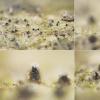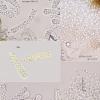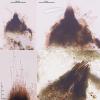
21-01-2026 16:48
Gernot FriebesHi,after my last unknown hyphomycete on this subst

21-01-2026 16:32
Gernot FriebesHi,I need your help with some black dots on a lich

20-01-2026 17:49
 Hardware Tony
Hardware Tony
I offer this collection as a possibility only as e

15-01-2026 15:55
 Lothar Krieglsteiner
Lothar Krieglsteiner
this one is especially interesting for me because

17-01-2026 19:35
Arnold BüschlenHallo, ich suche zu Cosmospora aurantiicola Lite

16-01-2026 00:45
Ethan CrensonHi all, On decorticated hardwood from a New York

18-01-2026 12:24
Hello.An anamorph located on the surface of a thin
Strange fungus on Phragmites stems
Enrique Rubio,
25-05-2022 12:06
These tiny, gregarious, gregarious, blackish, conical or pyriform ascomata up to 200 µm long, grew on Phragmites australis stems. The ascomata are glabrous, but the necks of the ascomata are fimbriated by long hyaline hairs but more shorter brownish hairs surround the ostiole. I see no paraphyses and the asci are very peculiar, cylindrical, rather long, sometimes more than 100 µm long, without reaction in Melzer's reagent, with numerous small, ellipsoidal, hyaline ascospores. I don't know their discharge mechanism and am therefore I'm very confused about the placement of this fungus, which I don't exclude that it could be lichenized since numerous green algae surround the ascomata.
Do you have any idea that could help me?
Thomas Læssøe,
25-05-2022 17:03
Re : Strange fungus on Phragmites stems
Enrique Rubio,
25-05-2022 17:30
Re : Strange fungus on Phragmites stems
I can see that what I thought were asci are in fact firmly cemented conidia!
Thanks a lot, Thomas.
A nice fungus!
Thanks a lot, Thomas.
A nice fungus!
Eduard Osieck,
27-05-2022 15:32
Re : Strange fungus on Phragmites stems
Anisomeridium polypori occurs mainly on wood bark: “rough bark of broad-leaved trees, especially Sambucus and Ulmus, sometimes overgrowing bryophytes; also on shaded rock, especially damp pebbles, and bone” (Orange 2013). A similar species has larger conidia (A. robustus). I don’t know whether there are any species of these lichenised species that occur on monocots. I am puzzling with an Anisomeridium on Juncus with long cirrhi filled with conidia. There exists a world key of Anisomeridium but it doesn’t appear to be available on Internet (Harris 1995, More Florida Lichens, including a 10 ¢ tour of the pyrenolichens. New York: privately published). Possibly it gives some indications about the occurrence on monocots.
Eduard
Eduard
Enrique Rubio,
27-05-2022 17:34
Re : Strange fungus on Phragmites stems
Thank you, Eduard
I will try to get that publication.
Thanks again
I will try to get that publication.
Thanks again
Chris Yeates,
27-05-2022 21:46

Re : Strange fungus on Phragmites stems
Paul Cannon points out on this thread http://www.ascofrance.com/search_forum/69018
that Anisomeridium has a wide substrate range - as you see here it was on a fern . . .
Chris




